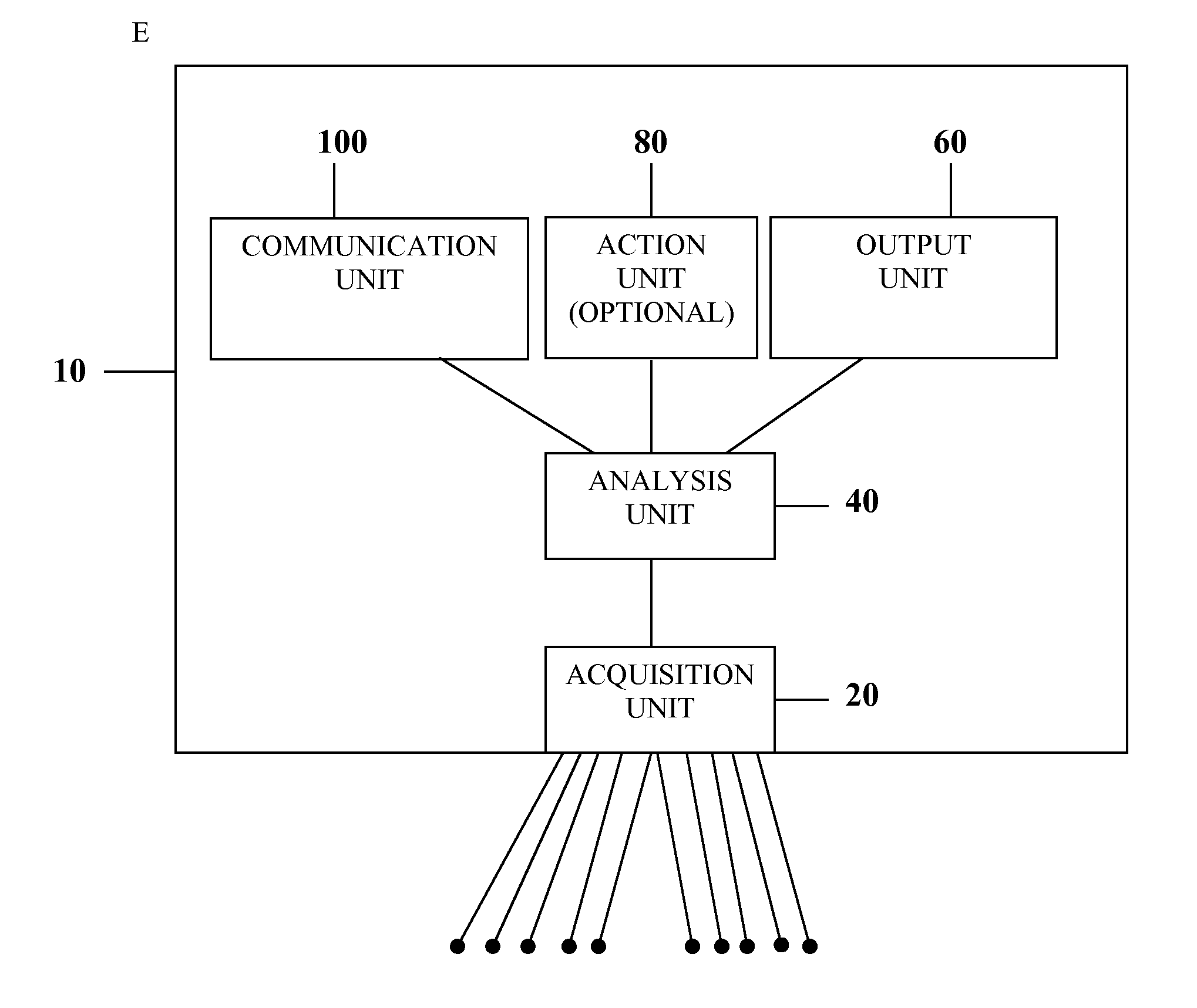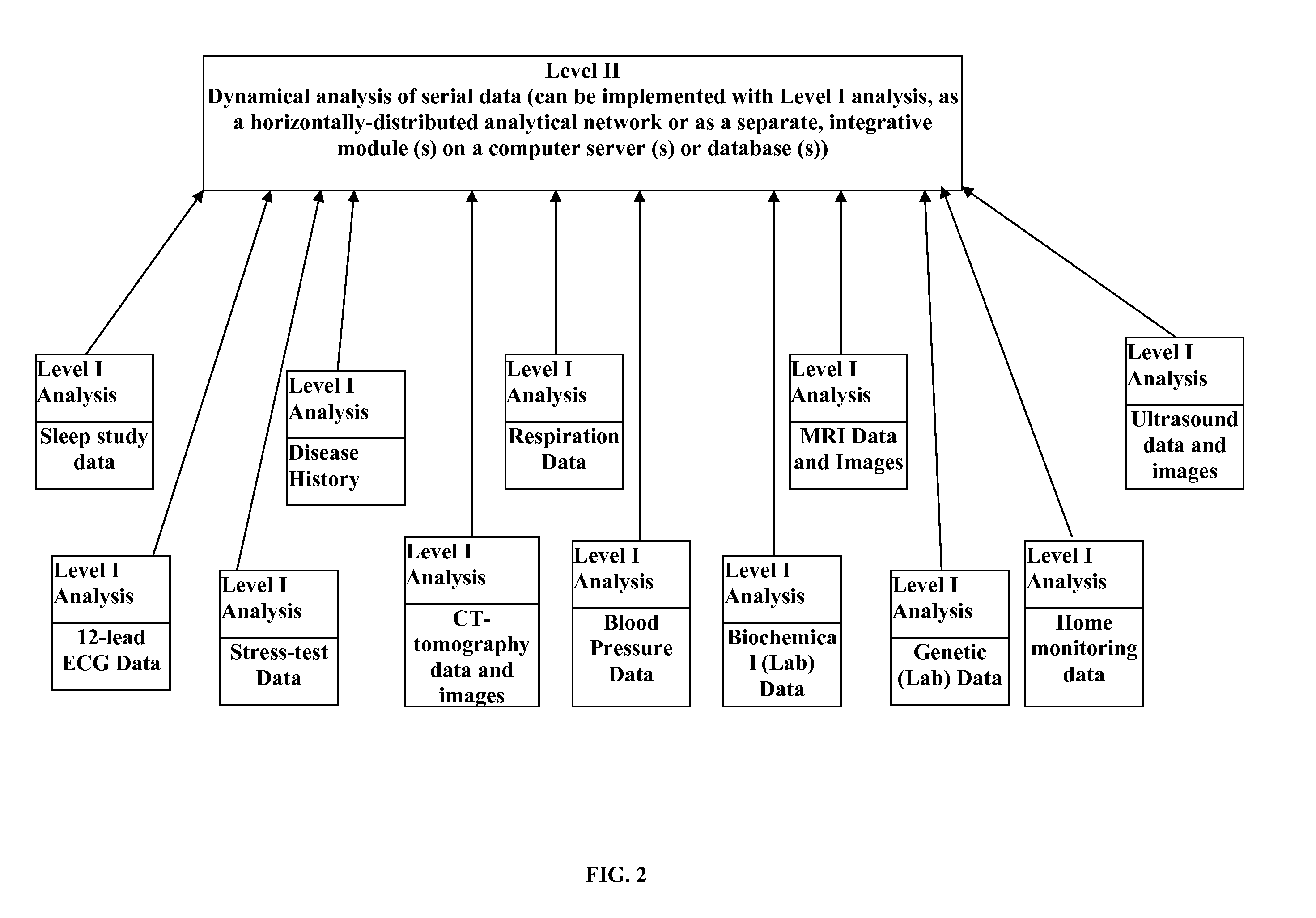Personalized Monitoring and Healthcare Information Management Using Physiological Basis Functions
a physiological basis and monitoring technology, applied in the field of personalized monitoring and analyzing of medical or health data, can solve the problems that neither method, however, can account for complex individual patterns of serial dynamics, and achieve the effect of accurate detection and classification of individuals, accurate tracking of individual dynamics
- Summary
- Abstract
- Description
- Claims
- Application Information
AI Technical Summary
Benefits of technology
Problems solved by technology
Method used
Image
Examples
example 1
Application of PBFs for in-Hospital Post-Operative, Critical Care and Emergency Settings
[0138]One example of a potential application of PBFs is for improved patient management in the post-operative, critical care and emergency care settings. As a standard of clinical care, patients after cardiac transplantation are routinely placed under continuous 24-hour observation and bedside monitoring in a post-operative intensive care unit. The data collected during such monitoring can be sent (using wireless or wire-type connection) for processing to the electronic medical record (EMR) system, which can also perform comparison of newly acquired data with each individual's PBFs obtained during previous, consecutive 24-hour periods of monitoring. In this hypothetical example, comparison with the individual's PBFs can expose subtle changes in the patterns of fever, heart rate, and post-operative blood count during the 24-hour period. These subtle changes cannot be exposed by traditional methods...
example 2
Application of PBFs for Improving the Efficacy of Clinical Trials
[0139]Analysis of serial changes in patients' health plays an important role in the assessment of clinical study progress and results. In this hypothetical example, a mobile, high-fidelity 12-lead ECG monitor with wireless network connectivity could have been employed by the clinical study investigators evaluating cardiac safety of a new pharmaceutical agent. The mobile system collects information regarding patients' body position and respiration, in addition to the high-fidelity 12-lead electrocardiogram. The data could be recorded and transmitted wirelessly via a cell phone line to a secure Internet site, which can automatically identify each patient in its database, compare the newly acquired data with previously obtained from the same patient PBFs and store the results of the comparisons in its database.
[0140]Since the individuals' PBFs provide more accurate baseline “templates” then population-based estimates, cha...
example 3
Application of PBFs for Mobile Monitoring and Cardiovascular Safety During Exercises
[0141]Physical exercises represent an important tool for maintaining cardiovascular health and fitness. However, they also represent a high-risk period with a number of life-threatening complications that occur due to unusually high stress on the cardiovascular system. A number of life-threatening cardiac arrhythmias, ischemic events and stroke have been reported during exercises even in high-level athletes. In this hypothetical example, a marathon runner is monitored by a mobile, wireless system that monitors an ECG and physical activity. The system extracts the primary elements representing the most important information contained in the ECG signal (the amplitudes and durations of P, Q, R, S, T, and U-waves, and ST, PQ, and QT segments) and compares them to reference values obtained from the individual's PBFs. The PBFs can be derived either locally, in the monitor, using software installed on a cel...
PUM
 Login to View More
Login to View More Abstract
Description
Claims
Application Information
 Login to View More
Login to View More - R&D
- Intellectual Property
- Life Sciences
- Materials
- Tech Scout
- Unparalleled Data Quality
- Higher Quality Content
- 60% Fewer Hallucinations
Browse by: Latest US Patents, China's latest patents, Technical Efficacy Thesaurus, Application Domain, Technology Topic, Popular Technical Reports.
© 2025 PatSnap. All rights reserved.Legal|Privacy policy|Modern Slavery Act Transparency Statement|Sitemap|About US| Contact US: help@patsnap.com



